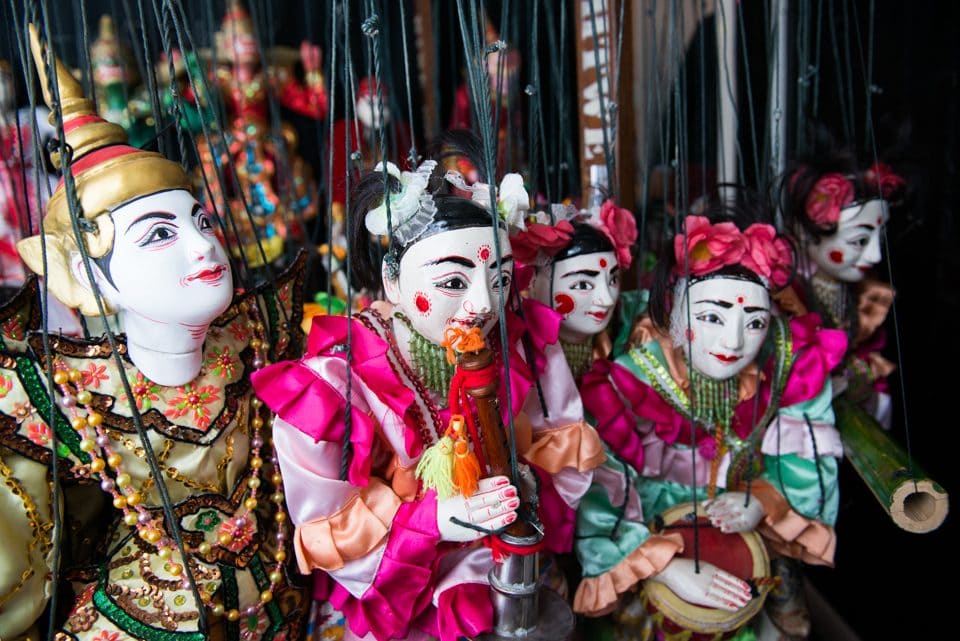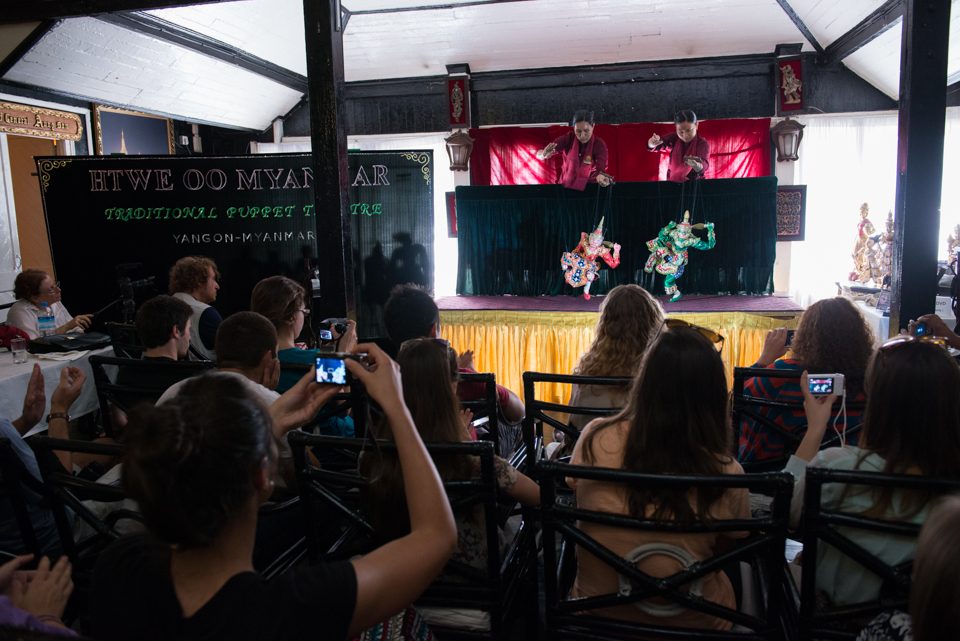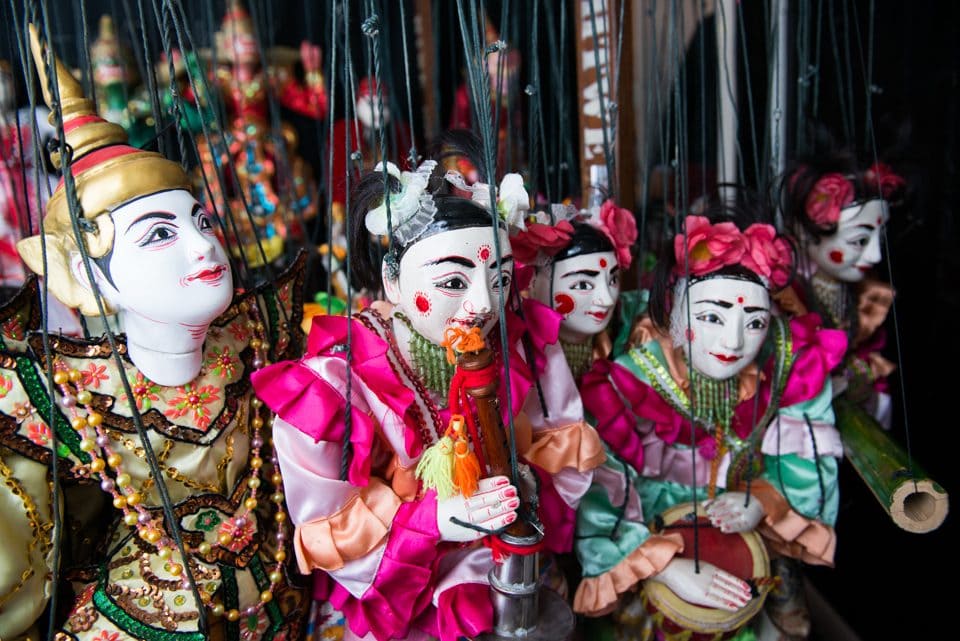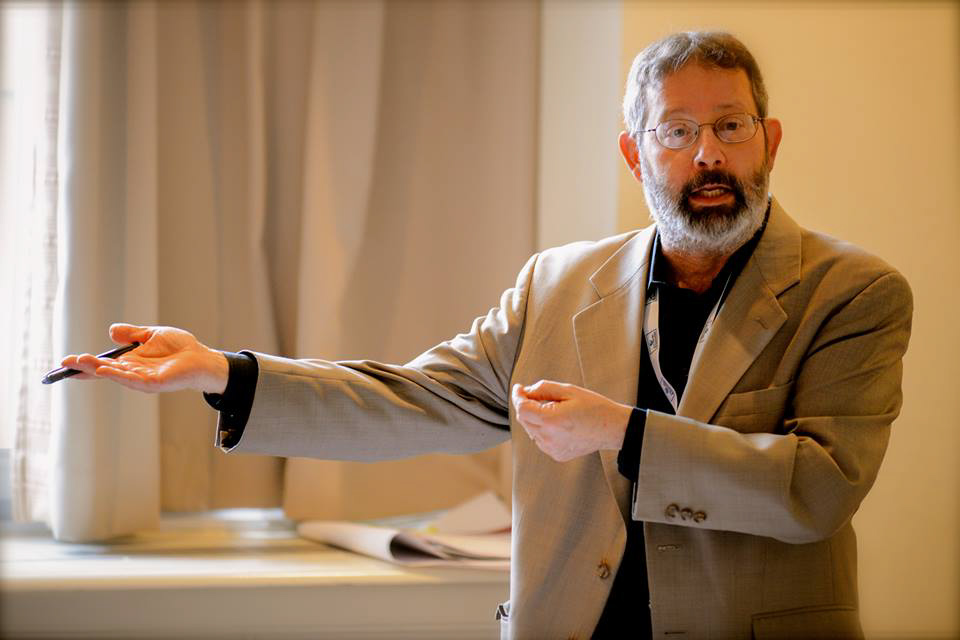Professor Drew Kahn’s Introduction to World Theatre class had the opportunity to examine a unique style of theatre while in Myanmar, traditional Burmese puppetry. Professor Kahn explained to his class, “Theatre is a reflection of society.” In Myanmar, puppetry has a long history and was used not only as entertainment for the royal courts, but as a way to give social commentary. When the people weren’t allowed to have a voice, messages and opinions could be delivered through the stories of the puppets.
Although Burmese puppetry is no longer performed for royal courts, puppetry troupes such as Htwe Oo Myanmar continue to maintain the tradition of their craft by staging shows for tourists and at pagoda festivals. Professor Kahn’s class was able to spend a day with the director of the puppet troupe, Khin Maung Htwe, and other master puppeteers observing how puppets are made, learning how to control a puppet, and watching a professional puppet show. Students discovered that every aspect of the art form of puppetry was intricate and deliberate, from colors and clothing to gestures and music. They would use these observations to help influence the final theatrical pieces they are putting together for the class back on the MV Explorer.













